Insect-friendly gardening offers a sustainable and eco-friendly approach to managing pests while fostering a thriving garden ecosystem. By creating habitats for beneficial insects like ladybugs and lacewings, gardeners can naturally reduce pest populations, promoting healthier plants and a balanced garden environment. This method not only enhances plant growth but also contributes to biodiversity, making it a vital practice for both home gardens and the planet. Whether through strategically planting pest-repellent crops like marigolds or constructing bug hotels, insect-friendly techniques provide a holistic solution to traditional pest control methods. As awareness grows, many are turning to these natural approaches to support local wildlife and maintain sustainable gardening practices. This guide explores essential strategies, from identifying common garden pests to designing landscapes that attract beneficial insects, offering practical insights for anyone eager to embrace insect-friendly gardening.
How to Keep Your Vegetable Garden Pest-Free
Keeping your vegetable garden pest-free is essential for a successful harvest. Here are some effective strategies to protect your plants:
- Companion Planting : Grow plants that repel pests naturally. Marigolds are known to deter pests like aphids and whiteflies. Other beneficial plants include basil, dill, and nasturtiums.
- Crop Rotation : Rotate crops in your garden to disrupt pest habitats. Avoid planting the same vegetable in the same location every year to confuse pests and reduce infestations.
- Neem Oil : Mix neem oil with water and apply it as a spray to control pests. Neem oil is safe for plants and effective against many common garden pests. Apply it every 14 days for optimal results.
- Natural Predators : Introduce beneficial insects like ladybugs and lacewings to your garden. These predators help control pest populations naturally.
- Monitor and Inspect Regularly : Check your plants daily to spot signs of pests. Early detection allows you to address issues before they become problematic.
- Use Traps : Set up sticky traps or bait stations to capture pests like aphids and slugs. This method is simple and effective for reducing pest numbers.
- Compost : Incorporate compost into your soil to improve its health and act as a natural deterrent to pests. Compost enhances soil structure and promotes plant growth.
- Healthy Plants : Ensure your plants are well-nourished through regular fertilization and adequate watering. Healthy plants are better equipped to handle pest challenges.
By combining these organic methods, you can maintain a pest-free garden while promoting environmental sustainability. Regular monitoring and maintenance are key to achieving long-term success.
How to Make a Bug Garden
A bug garden is a simple yet effective way to create a haven for insects in your yard. By providing shelter, food, and water, you can attract a variety of beneficial creatures that contribute to pollination and pest control. Here’s a step-by-step guide to building and maintaining your own bug garden:
Step 1: Choose the Right Location
Select a shaded, moist area of your garden, such as under trees or shrubs. Bugs prefer cooler, more humid environments, so avoid direct sunlight and well-drained areas.
Step 2: Gather Materials
Collect a mix of natural materials to create shelters and habitats:
- Decaying Wood: Logs, branches, and planks provide shelter and food for beetles and other wood-dwelling insects.
- Rock Piles: Create stacks of flat rocks to serve as resting places for butterflies and other insects.
- Logs and Sticks: Place cylindrical logs or long sticks horizontally to create tunnels for small insects.
- Dead Leaves: Layer leaves around the base of trees or shrubs to create cozy hiding spots.
Step 3: Create Shelter
Arrange the materials in a cluster to form shelters. Leave gaps and crevices for bugs to enter. Add dead leaves or grass clippings to enhance comfort and insulation.
Step 4: Provide Water Sources
Bugs need water to survive, so set up a shallow container, such as a birdbath or a small pond, in your garden. Keep it clean and refill it regularly.
Step 5: Plant Insect-Friendly Vegetation
Grow plants that attract bugs, such as:
- Wildflowers (great for bees and butterflies)
- Herbs like lavender, mint, and chamomile
- Basil and parsley (attract aphids)
- Dill and comfrey (favorite foods for ladybugs)
Step 6: Maintain the Bug Garden
Regularly inspect and clean the area to remove debris and old material. Add fresh decaying wood or rearrange the piles to keep the space inviting for bugs.
Step 7: Monitor and Enjoy
Observe the activity in your bug garden over time. You may see a variety of insects, from ladybugs to dragonflies, contributing to a thriving ecosystem in your backyard.
By following these steps, you can create a welcoming bug garden that benefits both the environment and your garden’s health. Remember to link to our insect hotel guide for more tips on creating a welcoming space for bugs.
What is the Most Common Pest in the Garden?
Gardeners often face challenges with various pests that can damage plants, destroy crops, and reduce the beauty of their gardens. Among these pests, certain species are more prevalent due to their adaptability and reproductive capabilities. Here are some of the most common garden pests:
- Suspect Snails and Slugs – These soft-bodied creatures are a gardener’s nightmare. They feed on leaves, stems, and flowers, causing significant damage. They are particularly active in moist environments and during the spring season.
- Aphids – Tiny insects that attack plants by sucking their juices. Aphids reproduce rapidly and can infest entire plants, leading to wilting and stunted growth. They are commonly found on roses, vegetables, and ornamental shrubs.
- Whiteflies – These small flies lay eggs on plant leaves, causing larvae to emerge and feed on the foliage. Whiteflies can weaken plants and transmit diseases. They are a common problem in warm climates.
- Cabbage Moths – These caterpillars chew through plant leaves and heads, damaging crops like cabbage, broccoli, and kale. Their presence is often indicated by the presence of their yellow eggs on plant stems.
- Fungus Gnats – Small flies that breed in soil, particularly in pots or containers. They are attracted to decaying organic matter and can harm plant roots. These gnats are a common issue in greenhouses and indoor gardens.
- Spider Mites – Minute arachnids that attach themselves to plant leaves, feeding on their sap. Spider mites can cause discoloration and leaf drop. They thrive in dry conditions and are often found in dusty environments.
- Bug Eggs – Various types of insect eggs laid on plants can hatch into pests like aphids, beetles, and caterpillars. Regular inspection of plants helps identify and manage these early stages of infestation.
To effectively control these pests, gardeners should implement integrated pest management strategies, such as crop rotation, companion planting, and the use of natural predators. Early detection and treatment are key to preventing pest populations from becoming overwhelming. By understanding the habits and life cycles of these common garden pests, gardeners can take proactive measures to protect their plants and ensure a healthy, productive garden.
Attracting Beneficial Insects to Your Garden
To effectively attract beneficial insects to your garden, consider implementing the following strategies:
- Plant Flowers for Nectar and Pollen: – Ladybugs are attracted to marigolds, yarrow, and calendula. – Hoverflies favor yarrows, sunflowers, and dill. – Bumblebees thrive on lavender, sunflowers, and cosmos. – Parasitic wasps are drawn to cosmos, coneflowers, and zinnias.
- Provide Shelter: – Create habitats for lacewings with piles of wood, dead branches, or compost. – Use birdhouses or nest boxes to accommodate beneficial insects.
- Grow Plants for Soil Health: – Clover, sweet alyssum, and vetch support soil-dwelling organisms, aiding predatory mites.
- Encourage Organic Matter: – Incorporate compost to create a nutrient-rich environment that benefits various insects.
- Consider Timing and Environment: – Plan plantings according to the seasonality of beneficial insects. – Maintain a balanced temperature by using mulch and avoiding harsh chemicals.
By combining these approaches, you can create a welcoming environment for beneficial insects, fostering a healthier garden ecosystem.
What Insects Does Basil Attract?
Basil, a popular herb used in cooking, can attract several types of insects due to its scent and growth habits. Here are some of the common insects that may be attracted to basil:
- Aphids : These small, pear-shaped insects feed on the leaves of basil and other plants, causing distortion and damage. They are attracted to the plant’s sap.
- Black Vine Weevils : These beetles are known to attack the roots of basil plants, leading to stunted growth and wilting. They prefer moist environments and are often found in soil.
- Fungus Gnats : These tiny flies are attracted to weak or damaged basil plants, particularly those growing in pots. They are drawn to the decaying organic matter in the soil.
- Spider Mites : These microscopic arachnids can infest basil plants, causing yellowing and leaf drop. They thrive in dry conditions and are difficult to detect without magnification.
- Whiteflies : These tiny, wingless insects cluster on the underside of basil leaves, excreting a sugary residue that can attract other pests and lead to sooty mold.
Why Are Insects Attracted to Basil?
Basil’s strong scent and essential oils may play a role in attracting certain insects. Additionally, basil’s preference for warm, sunny locations can make it a target for pests that thrive in such environments.
Protecting Basil from Pests
To protect your basil plants from these insects, consider the following approaches:- Natural Remedies : Apply neem oil or insecticidal soap to control aphids, whiteflies, and fungus gnats.- Companion Planting : Interplant basil with other herbs like rosemary or lavender to confuse pests.- Maintain Plant Health : Ensure your basil plants are healthy and well-nourished to better resist insect attacks.- Seasonal Rotation : Bring outdoor basil indoors during pest-prone seasons to minimize exposure.
By understanding which insects are attracted to basil and implementing protective measures, you can enjoy a healthy, pest-free basil crop.
Attracting Beneficial Insects with Perennials
Perennials play a crucial role in supporting beneficial insects, which are essential for maintaining ecosystem balance and promoting healthy gardens. By strategically selecting perennials, gardeners can create habitats that attract pollinators, ladybugs, and other helpful creatures. Here are some perennials known for their ability to attract beneficial insects:
- Lavender : Known for its fragrant properties, lavender attracts a variety of beneficial insects, including bees, butterflies, and ladybugs. Its nectar-rich flowers provide essential energy sources for these pollinators.
- Coneflower : A popular choice among gardeners, coneflowers are magnets for butterflies and bees. Their vibrant colors and abundant nectar make them highly attractive to pollinators.
- Sunflowers : While primarily grown for their seeds, sunflowers also attract beneficial insects. Their tall stems and large flower heads serve as landing pads for bees and other pollinators.
- Yarrow : Often called “herb of the year,” yarrow is known for its ability to attract beneficial insects. It provides shelter and food for ladybugs and other beneficial organisms.
- Milkweed : A staple in butterfly gardens, milkweed is a favorite for monarch butterflies. Its dense growth and nectar-rich flowers support a variety of pollinators.
- Daisy Fleabane : This drought-tolerant perennial is known for its ability to attract hoverflies and ladybugs. Its daisy-like flowers provide both food and shelter for these beneficial insects.
- Borage : Borage is a hardy perennial that attracts bees and butterflies. Its star-shaped flowers are rich in nectar, making them a valuable addition to pollinator-friendly gardens.
- Comfrey : Comfrey is a vigorous grower that attracts beneficial insects. Its purple flowers provide nectar for bees and butterflies, while its strong roots offer shelter for earthworms and other organisms.
- Violet : Violets are small but mighty when it comes to attracting pollinators. Their sweet-smelling flowers draw in bees and butterflies, making them excellent additions to pollinator-friendly gardens.
- Pentas : Pentas are tropical perennials that attract butterflies and other pollinators. Their clusters of star-shaped flowers are highly appealing to beneficial insects.
By incorporating these perennials into your garden, you can create a welcoming environment for beneficial insects. This not only supports pollination but also helps maintain biodiversity and overall garden health. Remember to consider the specific needs of your region and soil type when choosing perennials, as this will influence their growth and attractiveness to beneficial insects.
Explore more gardening tips and guides to learn how to maximize the benefits of your garden space.

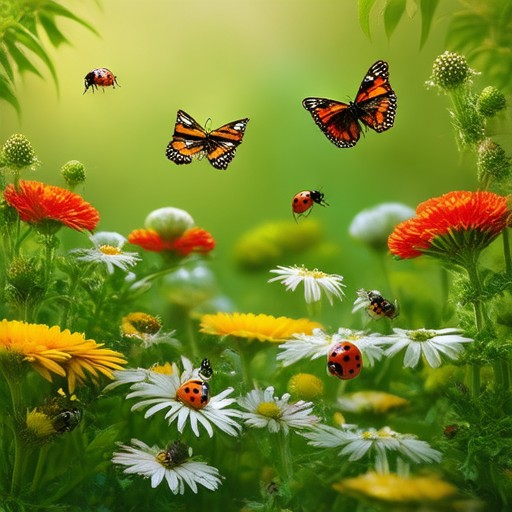
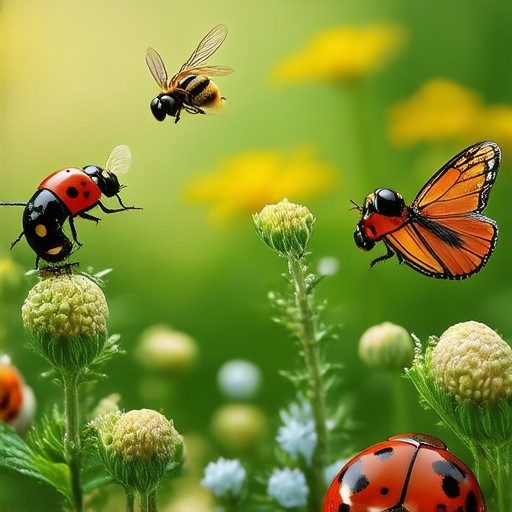

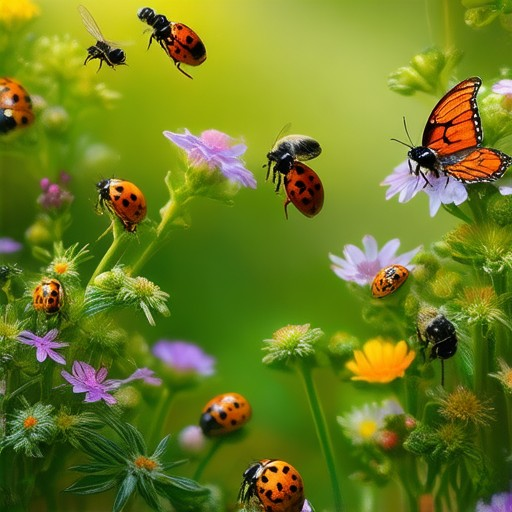
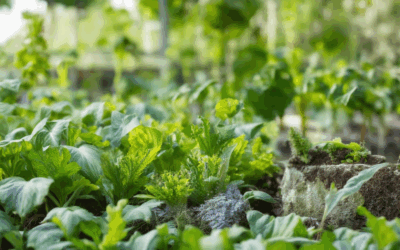
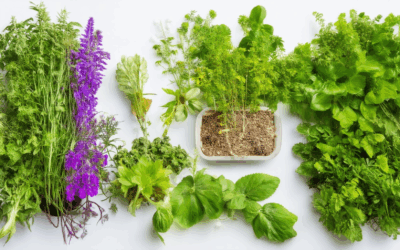
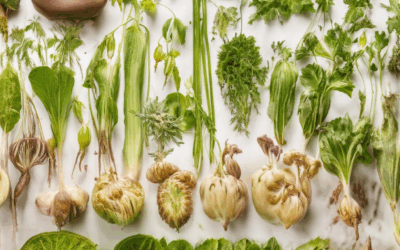
0 Comments